Prospecting for reservoir zones in mature trends sometimes requires unconventional exploration tools. AVO has been successfully used as a direct hydrocarbon indicator in some clastic rocks. Lately, AVO inversion for Lame parameters (λρ and μρ) has been shown to enhance identification of reservoir zones (Goodway et al, 1997). However, the overwhelming volume of data produced in AVO inversion for these parameters can make meaningful and timely interpretation a challenge. The integration of the various AVO derived attribute volumes with other non-AVO derived seismic attribute volumes can provide meaningful geological information when tied back to well data and verified as correlating with rock properties. This paper examines a case study of a 3D seismic survey in southern Alberta, Canada where a probabilistic neural network solution was employed on AVO attributes. The results were integrated with other seismic attributes to develop a more comprehensive interpretation (Pruden, 2002).
The target area is a Lower Cretaceous glauconite filled fluvial channel, deposited within an incised valley system. A3D seismic survey was acquired in order to create a stratigraphic model, consistent with all available well control and matching the production history. The ultimate goal was to locate undeveloped potential within the gas sands. The field has been producing since the early 1980s and two of the earliest, most prolific producers have begun to water out.
As the objective was stratigraphic in nature, the seismic data were processed with the objective of preserving relative amplitude relationships in the offset domain to allow for the use of AVO attribute analysis.
Time slice animation of the processed 3D migrated volume indicated the presence of a main valley cut in the northeast corner of the survey. A Coherence Cube™ analysis of the 3D survey, figure 1a, enhanced the channel features that were evident on the well data. The data were datumed on an easily mapped Upper Cretaceous marker to remove the distortions of regional dip from time slices at the zone of interest. Figure 1a shows this horizon slice through the coherence volume at the reservoir level.

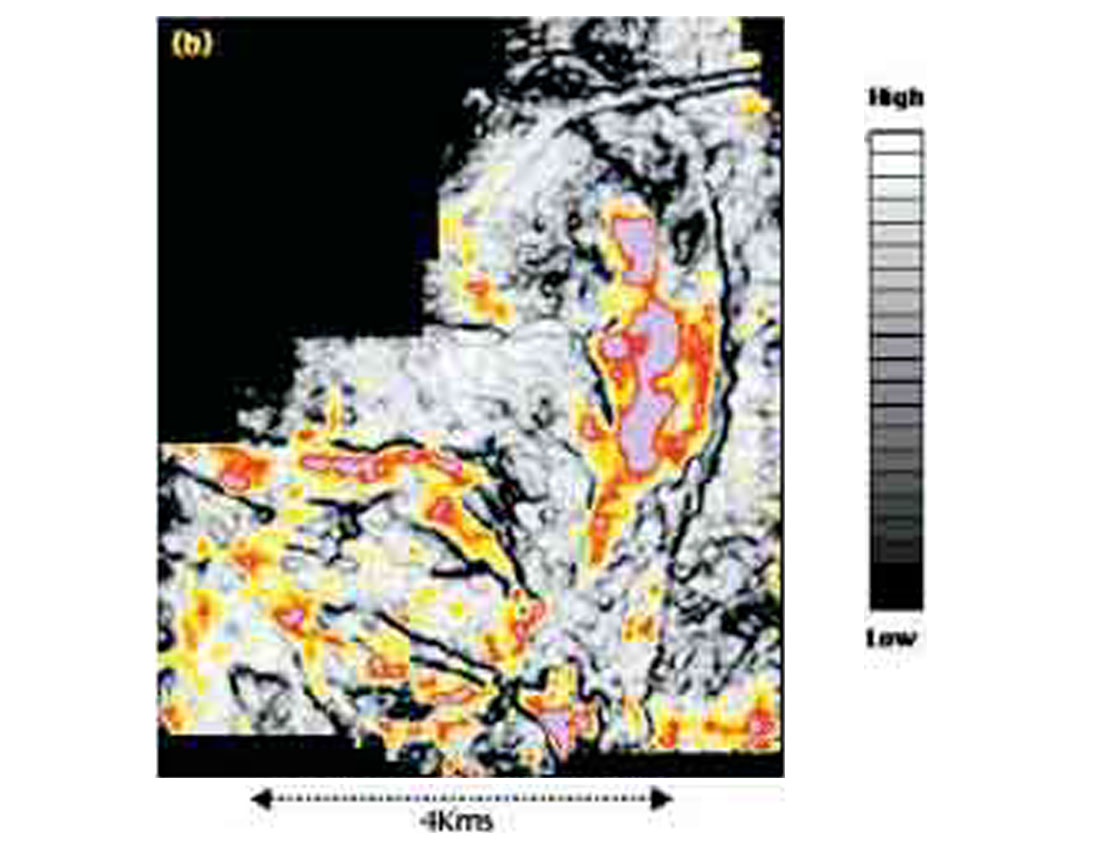
The complex trace envelope attribute is generally used for mapping lithology changes. A composite volume containing the envelope attribute superimposed on the coherence data is shown in Figure 1b. High envelope values are seen within the incised valley, however they do not provide information that separates tight lithic sands from productive Glauconite sands.
High amplitude anomalies will not necessarily be indicative of the presence of significant gas accumulations. Only a minor presence of gas is required within pore spaces of the reservoir rock to produce significant seismic amplitude effects (Toksöz et al, 1976). It has been reported (Diaz et al, 2001) that Glauconitic sandstone reservoir rocks can be delineated by Poisson’s ratio and AVO acoustic impedance inversion analysis. The generation and calibration of synthetic seismograms with full offset stacked migrated 3D data resulted in misties suggesting the possibility of AVO effects due to lithology and pore fluid fill. The near trace stack approximates a more normal incidence model, as assumed in the synthetic seismograms, improving the well ties. From this analysis, it was determined that AVO inversion for Lamé rock parameters could provide additional insight into the geologic complexity.
AVO inversion for Lamé rock parameters
Reservoir properties can be defined in terms of fundamental rock parameters such as incompressibility and rigidity. Goodway et al, 1997 suggested Lambda-Mu-Rho analysis to extract lithology and pore fluid information from seismic and well log data. The basic theory for this analysis has been given in Burianyk, 2000, Goodway, 2001, Ma, 2001 and Dufour et al 2002.
P-wave and S-wave impedance reflectivity responses were estimated by solving the Fatti simplification of the Zoeppritz equations (Fatti et al, 1994).

The Vp/Vs ratio for the data was estimated from dipole sonic log data proximal to the area of study.
Impedance reflectivities are related to Lamé parameters of incompressibility (λ) and rigidity (μ) by the relationships λρ=I2p – 2I2s and μρ = I2s where ρ is bulk density.
The Lamé parameters cannot be directly extracted without an estimation of the density parameter ρ.
Inversion for geological parameters
AVO inversion as described above yields several seismic attribute volumes which all contain fluid and lithological information:
- Density scaled compressibility
- Density scaled rigidity
- Derived normal incidence P-wave stack
- P impedance reflectivity
- S impedance reflectivity
- Fluid factor stack (Fatti et al, 1994)
Figure 2 shows the Lambda-Rho and Mu-Rho sections with the anomaly enclosed in a yellow polygon. The cross-plots for these two attributes are also shown. The yellow dots on the cross-plots represent the values within the polygons on figures 2 a and b. The red polygon on figure 2d indicates where we would expect to find the gas sands in Lambda-Rho and Mu-Rho space. In addition to gas sand identification, significant lithological information can be derived from the data.
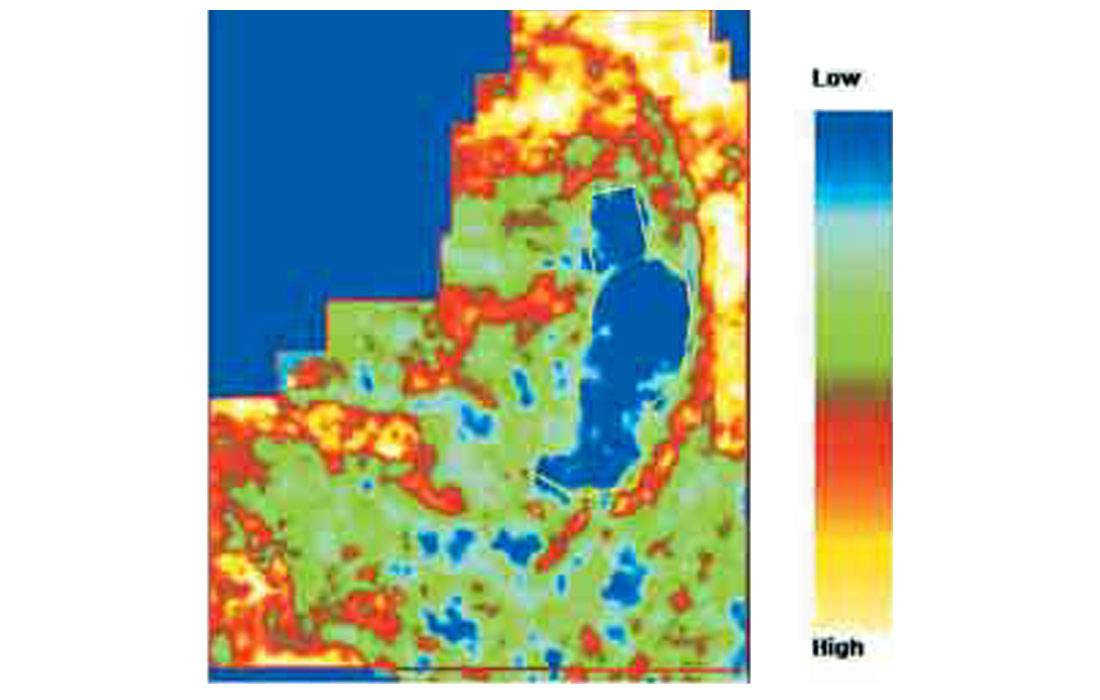
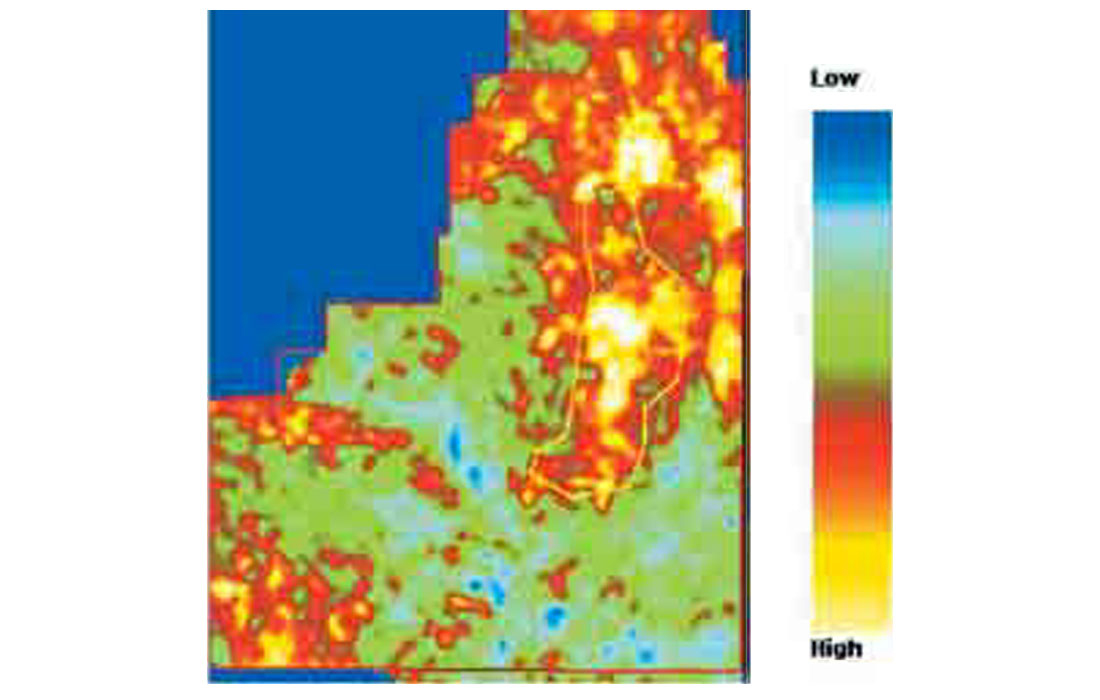
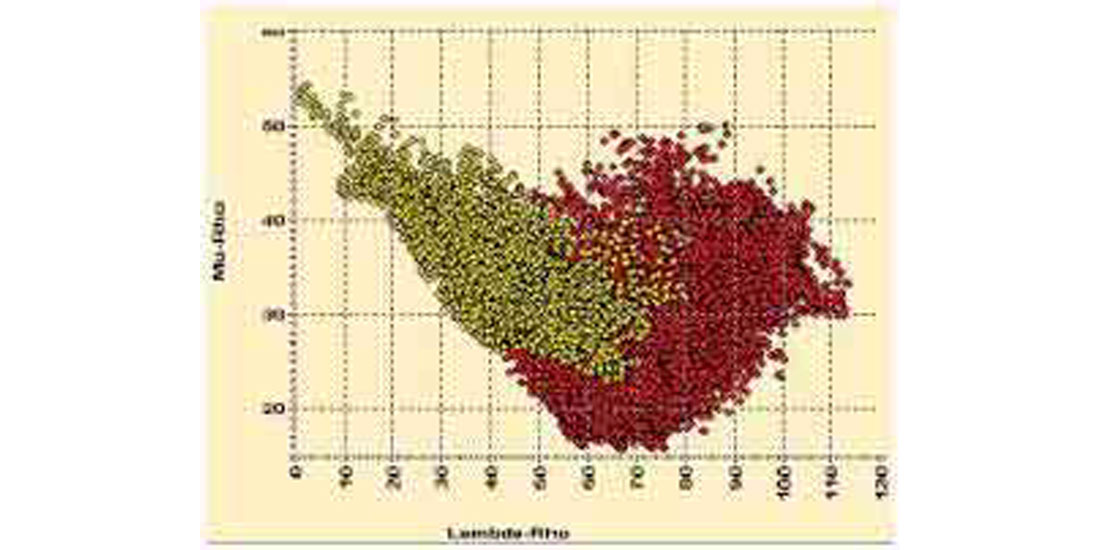
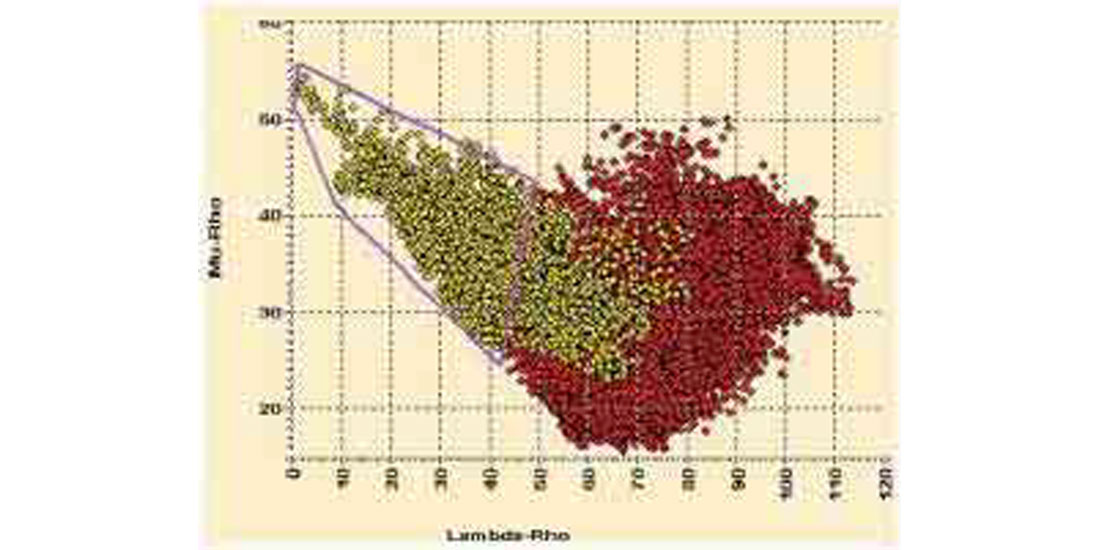
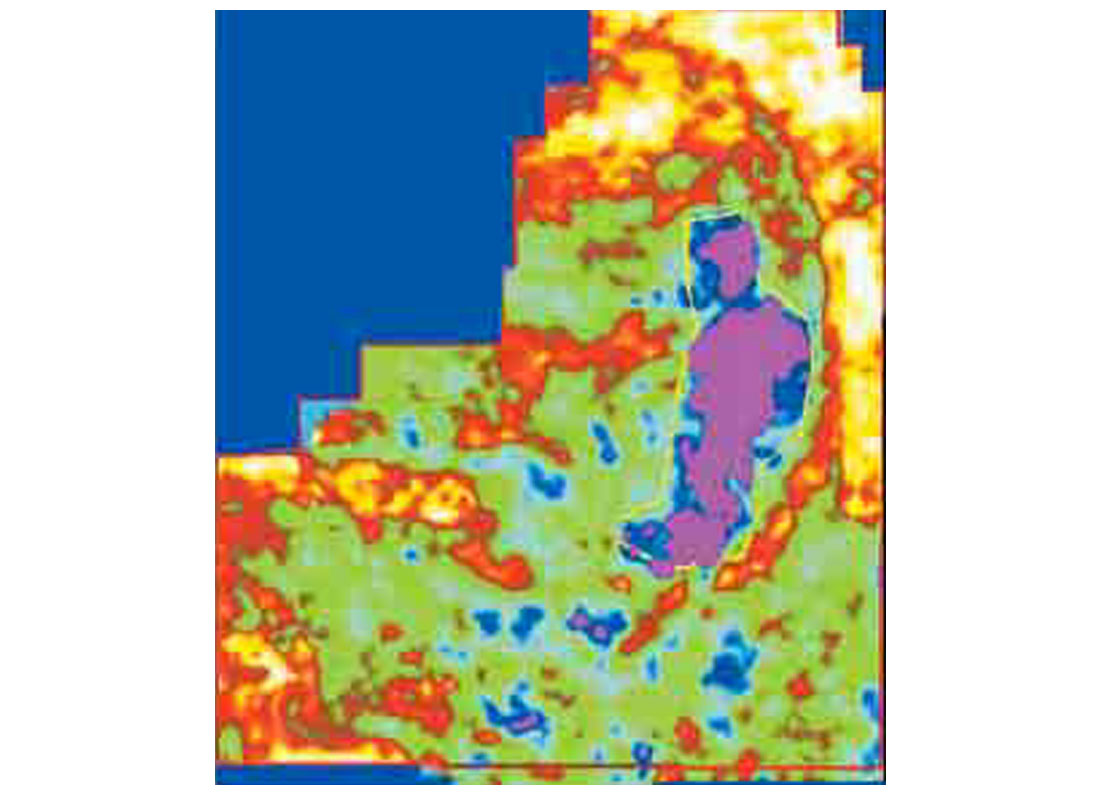
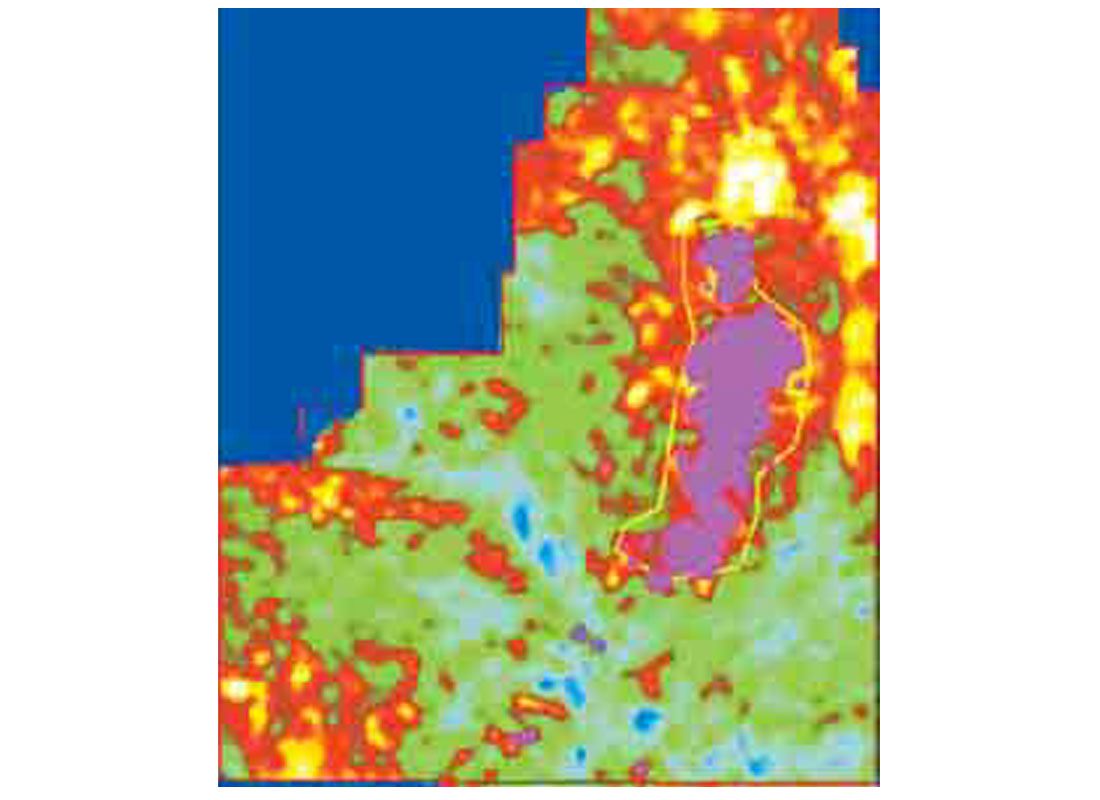
Multivariate statistical analysis can be used as an aid in determining whether the derived property volumes are related to gas saturation and lithology. Our approach examines the relationship between variables to determine whether common clusters or groupings will form that represent a particular lithology or fluid fill. Figure 2. shows a two dimensional example of this approach in which gas sands tend to separate themselves in Lambda-Rho, Mu-Rho cross-plot space. This approach becomes less intuitive when more than three variables are considered simultaneously. It is difficult to visualize n-dimensional cross-plot space if n is greater than four even when color is used as a fourth dimensional separator. It is within this n > 4 space that clustering or separation of differing lithology and fluid fill may be most evident.
An example of the separation power of cluster analysis is shown in Figure 3. Within the zone of interest, the value for each of the six variables has been subjected to a k-means cluster separation analysis, assuming that four distinct classes exist within the dataset. As can be seen in Figure 3, the cluster separation has divided the data into separate zones, based on the common relationships between the variables.

This type of unsupervised cluster separation analysis is often capable of creating useful character mappings of the data in 3D space by reducing a large number of attributes down to one (assigned cluster) that can be visualized on a map. Figure 4 is a small subset of the larger 3D that has had this analysis performed. Different clusters may tend to associate themselves with differing lithologies which can be verified by well data.
Analysis of this type has many inherent limitations. First, the results are sensitive to the number of clusters selected by the user. Testing is necessary in order to avoid underestimating or overestimating the number of clusters that adequately represent the data. Additionally, there is no guarantee that the derived clusters have anything to do with the lithology or fluid fill. The results must be calibrated to the well control. Thirdly, there is no guarantee that the wells have exhaustively sampled the geological space, or that the existing well control is representative of the statistical variability of the lithology.
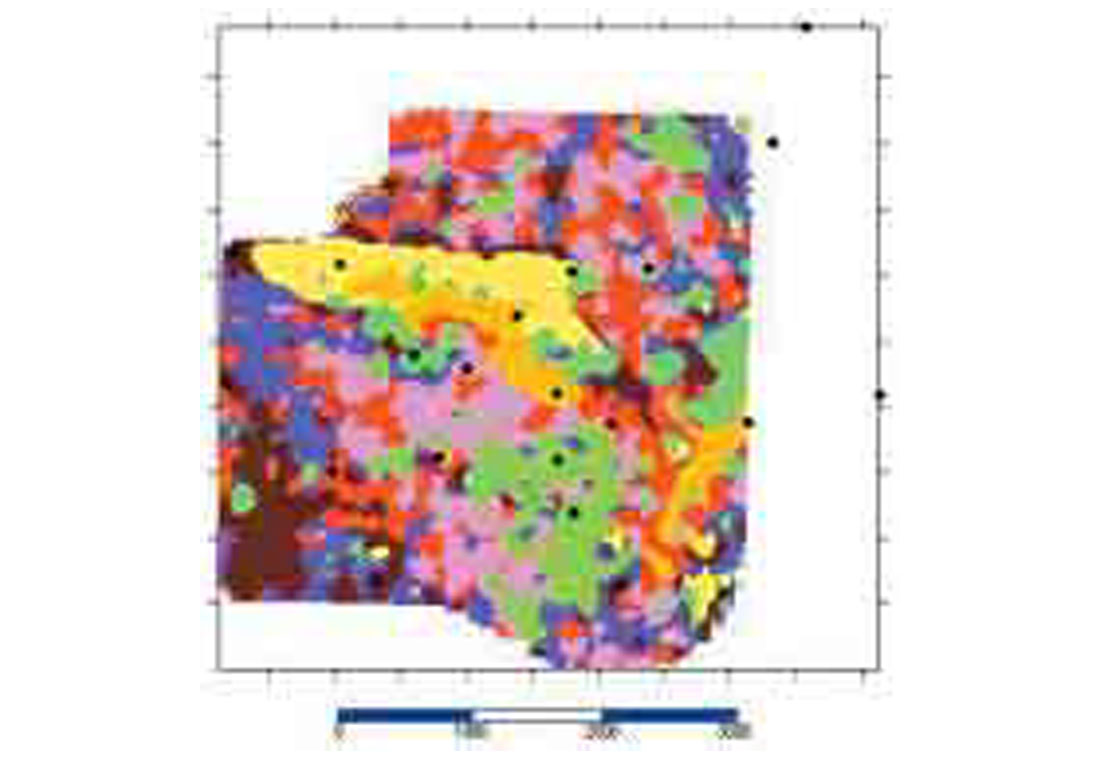
Given that the gamma ray logs in this area are diagnostic of sands, gamma ray logs exist for each well and there is a fairly even sampling of well data across the field, a deterministic approach was found that allowed us to quantitatively relate the measured seismic attributes to the gamma ray data. A simple analysis of the relationship of gamma ray values to acoustic impedance (Figure 5) suggests that while a general relationship between the two is visually apparent, it is clearly a nonlinear relationship. Further analysis of the other attributes with the gamma ray curve produces similar results.

A nonlinear multivariate determinant analysis between the derived multiple seismic attribute volumes and the measured gamma ray values at wells is a problem ideally suited for neural networks (Hampson, et. al., 2001). By training a neural network with a statistically representative population of the targeted log responses and the multiple seismic attribute volumes available at each well, a non-linear multi-attribute transform can be computed to produce an inversion volume of the targeted log type.
Using the gamma ray, acoustic and bulk density log curves available over the zone of interest for the sixteen wells, the procedure described by both Hampson et al 2001 and Leiphart and Hart 2001 was employed to derive gamma ray and bulk density inversions across the 3D volume.
Discussion of results
ρb = ϕρƒ + (1 + ϕ)ρma
where
ρb = bulk density
ϕ = porosity
ρma = a clean formation of known matrix density
ρƒ = a fluid of average density
From log data, the sand filled channels are interpreted as having gamma values less than 50 API gamma units. This cutoff value was used to mask out inverted density values for silts and shales. Analysis of Figures 6a and 6b shows three distinct sand bearing channels. The coherence time slice indicates the boundaries of the channels clearly and the gamma ray inversion helps in interpreting major sand bodies within the channels.
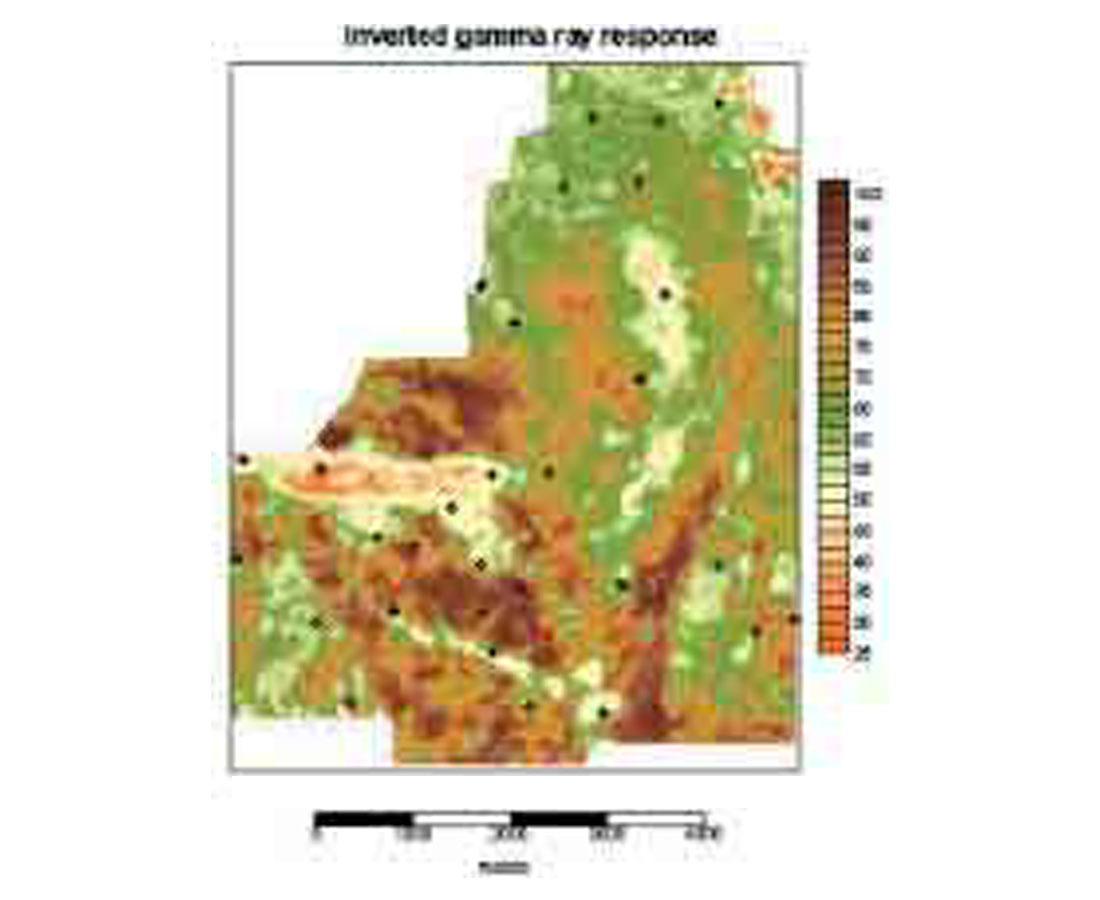
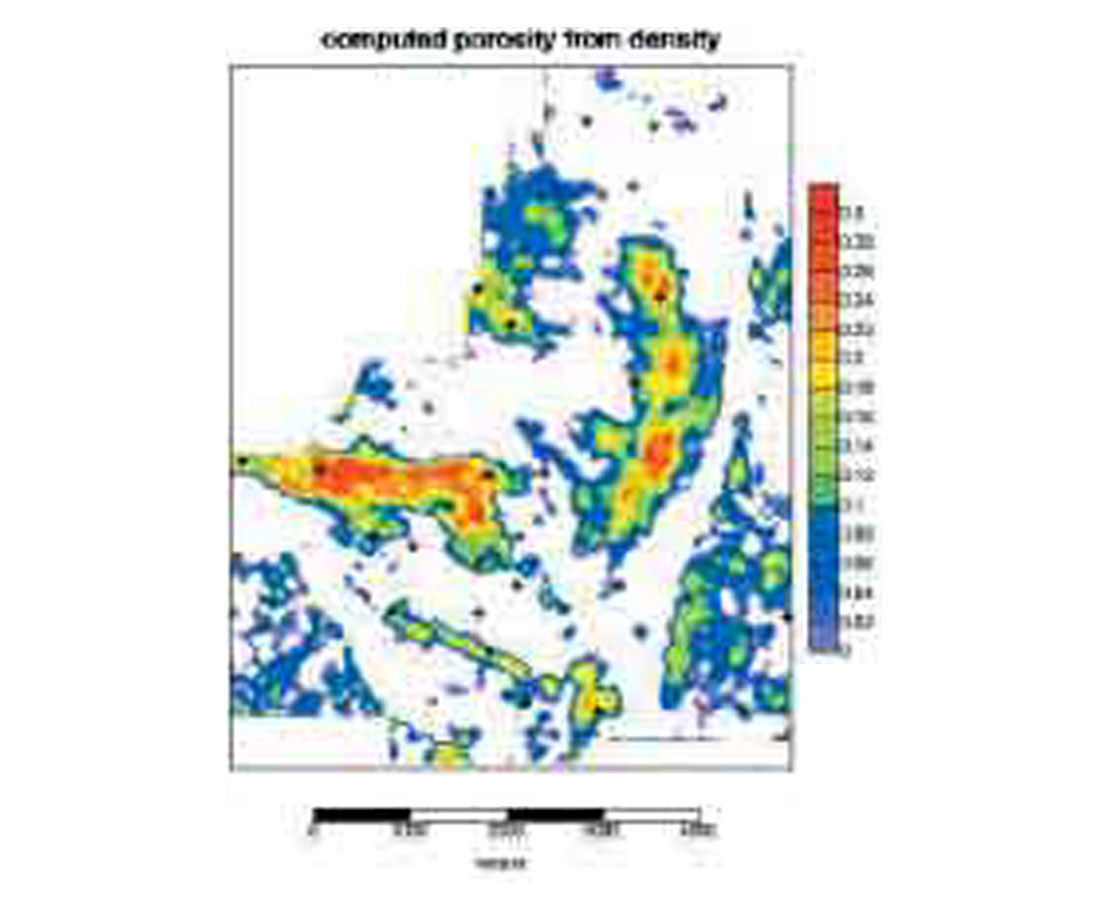
The incompressibility coefficient ( (Lambda) was determined by dividing the Lambda rho value by the inverted bulk density. The results are represented in Figure 7. High values of incompressibility are thought to represent brine and are colored blue, with lower (more compressible) values colored green, suggesting oil or red, suggesting gas.
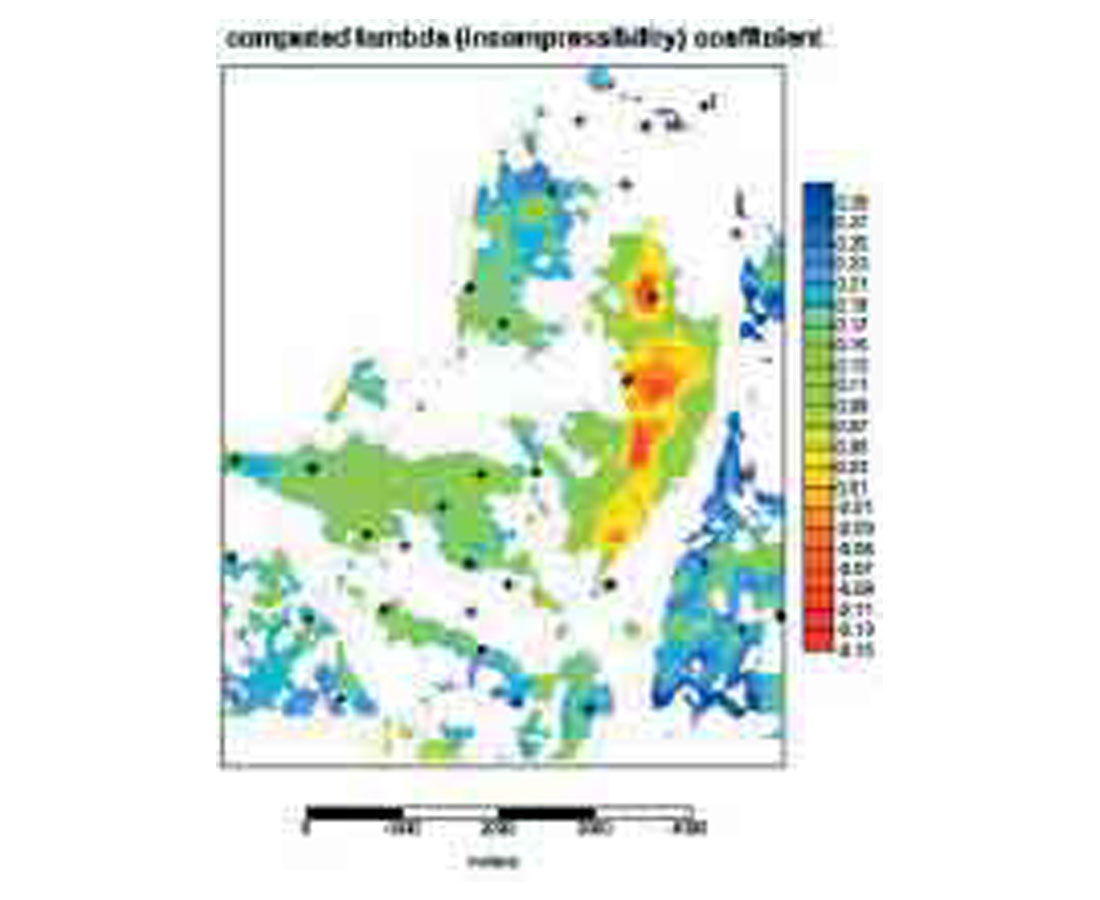
Analysis of the rigidity coefficient ( (Mu) suggests that the sands observed within the longer, north-south trending sand body on the eastern half of the survey contain a different rock type than the sand bodies present in the west half of the survey. These results are consistent with the observed production from the two gas wells that penetrate the north-south channel. The geomorphology of this north-south channel indicates that it was deposited in a different depositional cycle than were the other channels, providing for the potential opportunity for a different lithology to de deposited.
Conclusions
AVO inversion results for the estimation of Lame parameters were successfully integrated with seismic attribute volumes derived from neural network analysis. The results were converted to volumes of log gamma ray and bulk density. These geologically meaningful parameters contributed to the estimation of relative sand distribution, porosity and fluid content estimates.
Two new drilling locations derived from this work encountered a new gas charged reservoir, extending the life of the gas pool and adding new reserves to the operating company’s portfolio.

Acknowledgements
We wish to acknowledge Kicking Horse Resources Ltd. for their permission to publish the results of this study. We also wish to thank and acknowledge Wendy Ohlhauser and Rafed Kasim of Core Lab Reservoir Technologies, Calgary for their help in processing the 3D survey and AVO analysis respectively.
Coherence Cube is a trademark of Core Laboratories.










Join the Conversation
Interested in starting, or contributing to a conversation about an article or issue of the RECORDER? Join our CSEG LinkedIn Group.
Share This Article